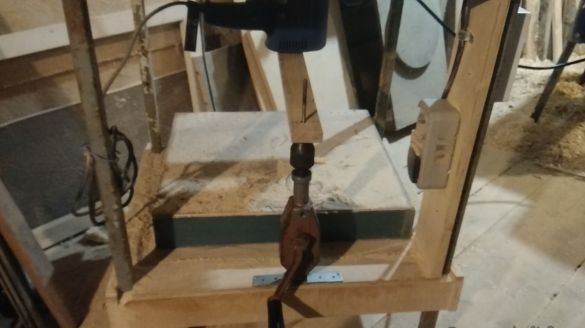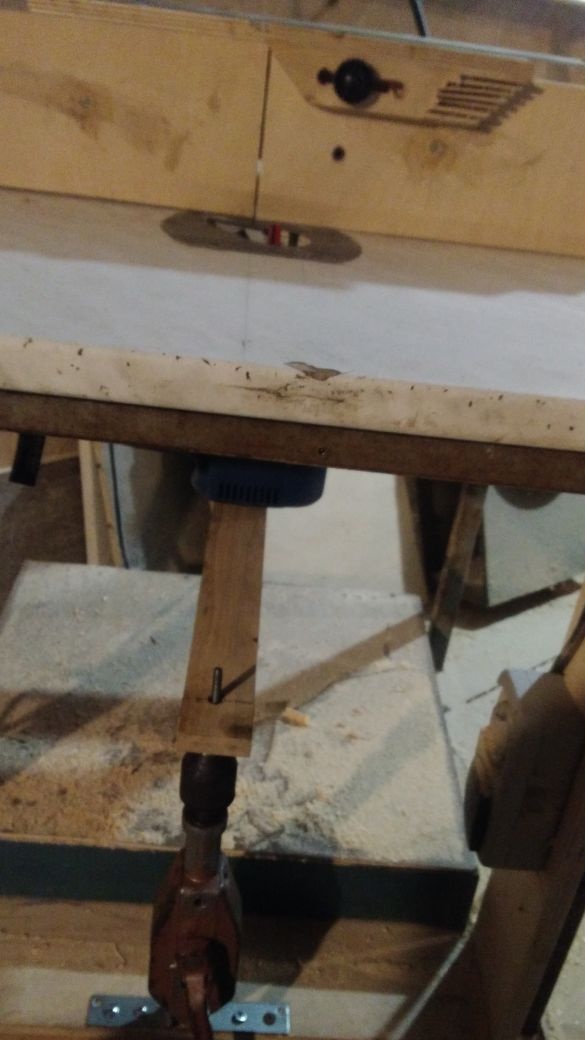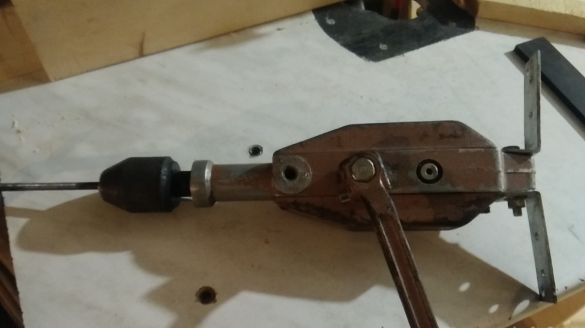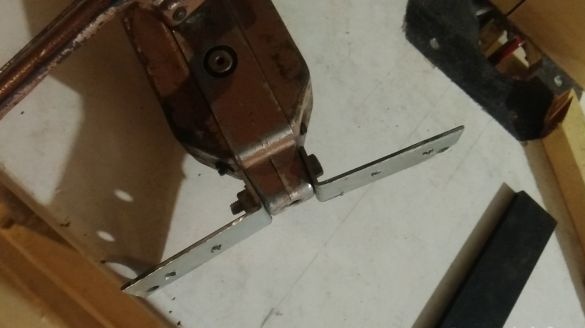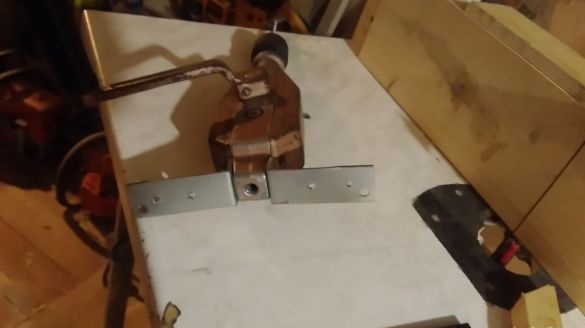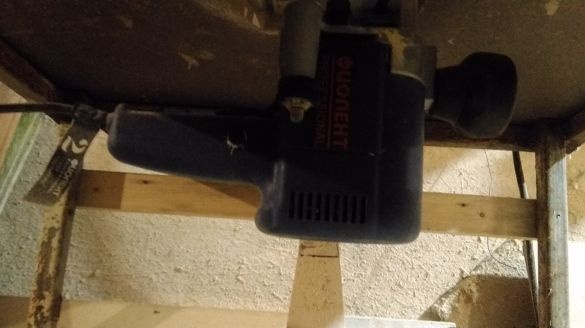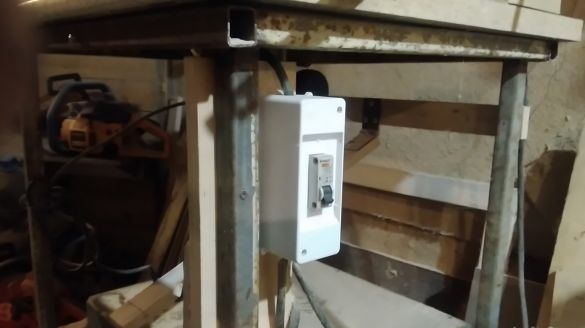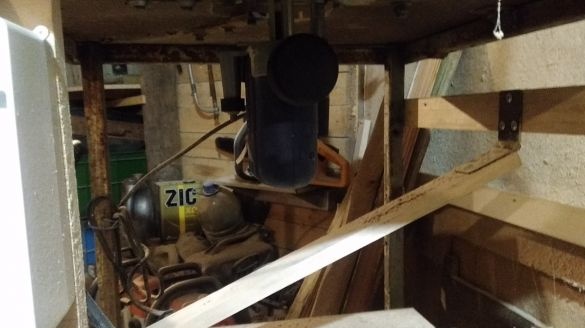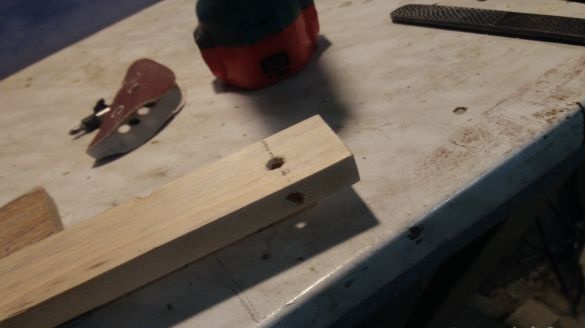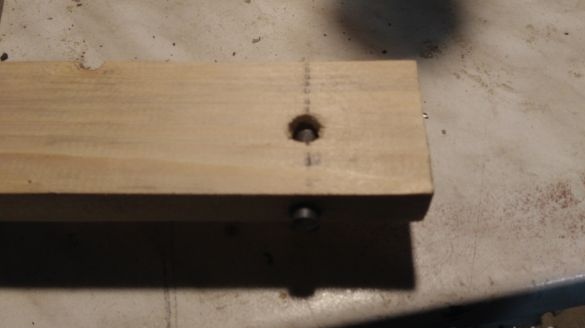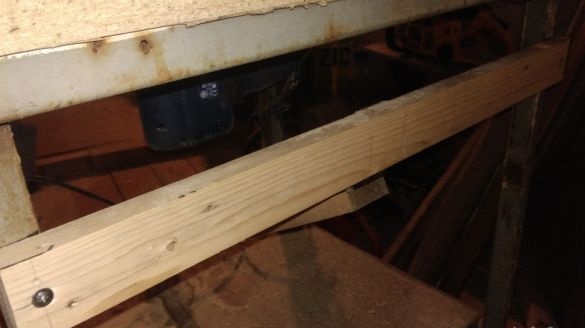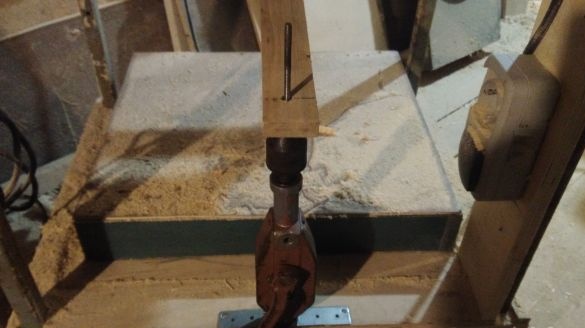Everyone who has a manual router, sooner or later comes up with the idea of creating a table for him, which would turn it into a full-fledged stationary machine, with which you can implement all the functions embedded in it. I also once visited such a thought. I will not dwell on the moments of making the table, there is plenty of information on this topic on the network for every taste and budget. I want to bring to your attention my version of the elevator for raising and lowering the milling cutter relative to the surface of the table. The design is as budget-friendly as possible, you don’t need to buy anything, everything that is required for manufacturing is in each home workshop.
So, what do we need:
wooden rail capable of supporting the weight of the router
-bolt with a diameter of 10-12 mm
Metal bar with a diameter of 5-7mm and a length of 100-120mm
- whatever the hinge (door hinge) to the size of the rail
- old hand drill
Of the tools you will need a tap, die, grinder, screwdriver, screws, drills, etc.
First, make a nut. We cut off from the bolt the part on which there is no thread, we will make the length across the width of the rail. In the middle of this billet on the side surface we drill a hole slightly smaller in diameter of the rod size (taking into account further cutting of threads on the rod and in the hole).
On the rod we cut the thread along the entire length, we make the corresponding thread in the body of the workpiece cut off from the bolt. As a result, we got a home-made guide screw pair.
After that, we drill a hole in the rail for our homemade nut (the nut should move freely in the hole, but not hang in it). We drill another one perpendicular to this hole, according to the diameter of the rod (a little more is possible). At the other end of the rail, we fix a suitable loop (hinge).
Now we insert our nut into the rail, screw a threaded rod into it, clamp the rod into the drill chuck, fix the drill at the bottom of the table on the front side. We fix the other end of the rail with a hinge on the opposite side. As a result of all manipulations, a design should be produced that moves the milling machine vertically when the handle of the drill is rotated. I don’t indicate any sizes, becauseall this is attached as they say "in place, how to ask"
As illustrations I bring photographs of how this is done with me. The sizes can be any, I want to believe, - the design principle is clear.
Thanks for attention.

